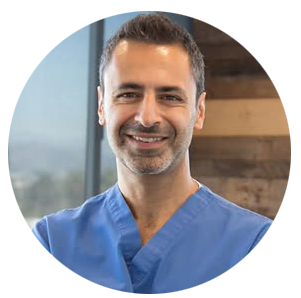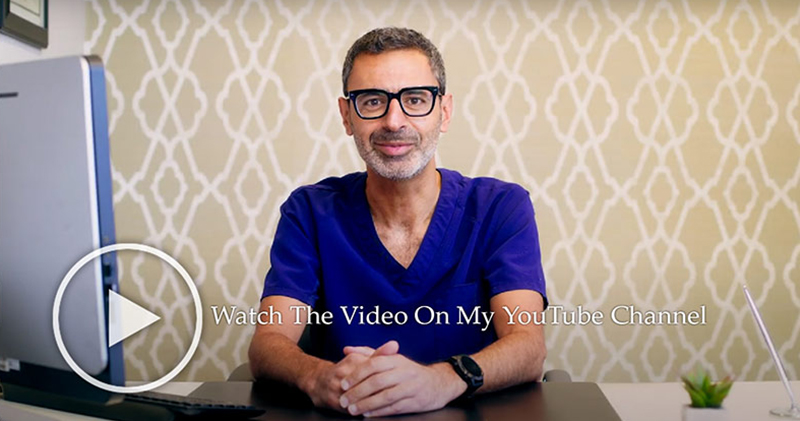Gynecomastia 101
Written by Dr. Babak Dadvand
All males have breast tissue. However, men that have gynecomastia experience an increased amount of glandular tissue in the pectoral area. These patients usually feel embarrassed and often avoid situations where they will need to expose their chests in public, which can affect their confidence and self-esteem.
Dr. Dadvand, a double board-certified plastic surgeon in Los Angeles, has dedicated a large part of his practice to deeply understanding gynecomastia and develop techniques to surgically correct this condition. He specializes in gynecomastia surgery for males of all ages in LA and strives to help his patients achieve their goals. To learn more about Dr. Dadvand’s work, get in touch with his practice and make an appointment today.
What Causes Gynecomastia?
There are many factors that can lead to an increase in gland tissue. The broad categories of causes include:
- Physiologic events, like puberty and old age
- Pharmacologic sources, like medications
- Pathologic issues, including hormone disorders and breast cancer
Puberty is a common cause of gynecomastia due to hormonal surges and imbalances. Many medications such as anabolic steroids, antidepressants, antipsychotics, anti-seizure solutions, and heart medications may also cause disturbances to the delicate testosterone pathways. This will alter the testosterone-to-estrogen ratio and can lead to the production of secondary estrogens.
An elevated estrogen level can stimulate the glandular tissue to grow, leading to the features typical in gynecomastia: puffy nipple, cone-shaped chest, and fullness on the outer and lower part of the chest. While it is important to first determine the cause of gynecomastia, for many patients gynecomastia surgery is a viable option for resolving this condition.
Risks Associated with Gynecomastia Surgery
Some of the temporary side-effects and potential risks of gynecomastia surgery include:
- Complications with anesthesia
- Swelling and discomfort
- Small potential for infection
- Scarring
- Asymmetry in the chest area


First off, I myself am a physician. I had bilateral MALE BREAST REDUCTION surgery for gynecomastia and I wholeheartedly recommend Dr. D. I had thought about getting the procedure done for the past 2 years because I was self-conscious going to the gym, going to the beach and even just wearing fitted t-shirts. I finally decided to pull the trigger about 6 months ago and I’m so glad that I did. I looked around, got several quotes and visited several doctors. I knew I wanted someone that did a lot of these surgeries for guys.
READ MORE
The Difference Between Fatty and Glandular Tissue
The glandular tissue is located under the areola but in most males, it extends out to the side and to a lesser degree towards the inner chest. Glandular tissue is different than fatty tissue and so its removal differs as well. Glandular tissue tends to feel firm and rubbery.
Liposuction is generally not successful in removing excess glandular tissue. Thus, direct excision is the technique Dr. Dadvand employs to predictably treat the glandular excess. This can be used in conjunction with liposuction of the surrounding fatty tissue or as a stand-alone treatment.
If you want to learn more about Dr. Dadvand’s work, contact his practice and book a consultation today.
FAQ
Can gynecomastia go away?
In teenage males, gynecomastia can recede naturally 6 months to 3 years after it first appears. However, if the symptoms persist longer than that, the condition may be permanent. In these cases, it is important to consult with a gynecomastia specialist that can help identify this issue and offer long-term solutions as well.
What causes gynecomastia?
Gynecomastia may be caused by a variety of factors, which include:
- Hormonal imbalances
- Liver or kidney conditions
- Alcohol and drug abuse
- Tumors in the pituitary gland and other organs
- Anabolic steroids and certain pharmaceuticals
- Antidepressants, antipsychotics, and similar medication
- Some heart supplements
Can gynecomastia turn into cancer?
While gynecomastia may slightly increase the risk of cancer in men, the chances of developing breast cancer are still extremely low. However, the best way to prevent any long-term complications is to consult with a double board-certified surgeon that can find the best approach to eliminating the glandular tissue.
What is the best treatment for gynecomastia?
Depending on the cause, there are several courses of action to address male breast enlargement. If the issue is caused by pharmaceuticals or foreign substances, changing the medication or halting the consumption of these substances may be enough. If no hormonal imbalances or other causes are detected, then gynecomastia surgery may be the best alternative.
Does gynecomastia get worse?
The development of gynecomastia depends on a variety of factors, which include hormonal levels. In young adults, gynecomastia can recede or stay at the same level for a long time. However, as testosterone levels decrease, the symptoms may become more apparent and cause confidence issues later on.

By Dr. Babak Dadvand, M.D.
As a board-certified plastic surgeon and skilled portrait artist, I bring a distinctive combination of artistic vision and surgical expertise. My commitment is to deliver exceptional outcomes while maintaining the highest ethical standards and fostering trust and satisfaction among my patients.



